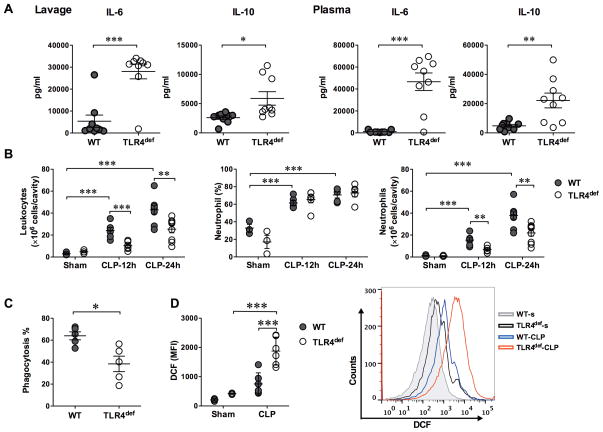Fig. 6. TLR4 deficiency lead to increase inflammation, impaired neutrophil recruitment and phagocytic function, and increased leukocyte ROS production during low grade polymicrobial sepsis.
A. Cytokines in the lavage and plasma of WT and TLR4def mice following CLP. Twenty-four hours after CLP procedure, the peritoneal lavage and plasma were collected from the septic mice. IL-6 and IL-10 were measured using a multiplex fluorescent bead-based immunoassay. t test was applied for difference between groups. n=9 in each group. B. Leukocytes in the peritoneal space following sham or CLP procedures. Total peritoneal cells were manually counted by hemacytometer. Neutrophils were calculated based on the total peritoneal cell numbers multiplied by the percentage of neutrophils as measured by flow cytometry. Two-way ANOVA was used for statistic analysis and Bonferroni adjusted p-value was applied for post-hoc analyses between groups. n=3 in sham groups, n=6 in CLP-12h groups, n= 9 in CLP-24h groups. C. Percentages of phagocytic neutrophils. t-test was applied for difference between the two groups. n=5 in each group. D. ROS production in peritoneal cells. Intracellular ROS of the peritoneal cells was measured by flow cytometry with DCF stain 12 h after surgery. Two-way ANOVA was used for statistic analysis and Bonferroni post hoc tests was applied for difference between groups. n=3 in sham groups, n=6 in CLP groups, * P<0.05, ** P<0.01, *** P<0.001. WT, wild type; TLR, Toll-like receptor; IL, interleukin; DCF, dichlorodihydrofluorescein; MFI, mean fluorescence intensity; CLP, cecum ligation and puncture; WT-s, WT-sham; TLR4def-s, TLR4def-sham; ROS, Reactive oxygen species.

